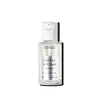What's inside
What's inside
 Key Ingredients
Key Ingredients

 Benefits
Benefits

 Concerns
Concerns

 Ingredients Side-by-side
Ingredients Side-by-side

Water
Skin ConditioningButylene Glycol
HumectantGlycerin
HumectantDipropylene Glycol
HumectantNiacinamide
Smoothing1,2-Hexanediol
Skin ConditioningSodium Citrate
BufferingGlycolic Acid
BufferingPropanediol
SolventHydroxyacetophenone
AntioxidantHydroxyethylcellulose
Emulsion StabilisingPolyacrylate Crosspolymer-6
Emulsion StabilisingGlycereth-25 PCA Isostearate
EmulsifyingMilk Protein Extract
Zea Mays Kernel Extract
Ethylhexylglycerin
Skin ConditioningAdenosine
Skin ConditioningDisodium EDTA
Lactic Acid
BufferingGluconolactone
Skin ConditioningSalicylic Acid
MaskingHyaluronic Acid
HumectantHydrolyzed Hyaluronic Acid
HumectantSodium Hyaluronate
HumectantFructan
Skin ConditioningOenothera Biennis Flower Extract
AstringentPueraria Lobata Root Extract
HumectantPinus Palustris Leaf Extract
TonicUlmus Davidiana Root Extract
Skin ConditioningGlucose
HumectantDiospyros Kaki Leaf Extract
Skin ProtectingVitis Vinifera Fruit Extract
Skin ConditioningCamellia Sinensis Leaf Extract
AntimicrobialCoffea Arabica Seed Extract
MaskingCarthamus Tinctorius Flower Extract
Skin ConditioningPolygonum Cuspidatum Root Extract
AntioxidantCastanea Crenata Shell Extract
Skin ConditioningZanthoxylum Piperitum Fruit Extract
Skin ConditioningHamamelis Virginiana Leaf Extract
Skin ConditioningHydrolyzed Soymilk Protein
Skin ConditioningLactobacillus/Milk Ferment Filtrate
Skin ConditioningMelaleuca Alternifolia Leaf Extract
PerfumingHydrogenated Lecithin
EmulsifyingCetearyl Alcohol
EmollientStearic Acid
CleansingCeramide NP
Skin ConditioningCholesterol
EmollientPhytosphingosine
Skin ConditioningCeramide Ng
Skin ConditioningCeramide Ns
Skin ConditioningCeramide AP
Skin ConditioningCeramide As
Skin ConditioningCeramide EOP
Skin ConditioningWater, Butylene Glycol, Glycerin, Dipropylene Glycol, Niacinamide, 1,2-Hexanediol, Sodium Citrate, Glycolic Acid, Propanediol, Hydroxyacetophenone, Hydroxyethylcellulose, Polyacrylate Crosspolymer-6, Glycereth-25 PCA Isostearate, Milk Protein Extract, Zea Mays Kernel Extract, Ethylhexylglycerin, Adenosine, Disodium EDTA, Lactic Acid, Gluconolactone, Salicylic Acid, Hyaluronic Acid, Hydrolyzed Hyaluronic Acid, Sodium Hyaluronate, Fructan, Oenothera Biennis Flower Extract, Pueraria Lobata Root Extract, Pinus Palustris Leaf Extract, Ulmus Davidiana Root Extract, Glucose, Diospyros Kaki Leaf Extract, Vitis Vinifera Fruit Extract, Camellia Sinensis Leaf Extract, Coffea Arabica Seed Extract, Carthamus Tinctorius Flower Extract, Polygonum Cuspidatum Root Extract, Castanea Crenata Shell Extract, Zanthoxylum Piperitum Fruit Extract, Hamamelis Virginiana Leaf Extract, Hydrolyzed Soymilk Protein, Lactobacillus/Milk Ferment Filtrate, Melaleuca Alternifolia Leaf Extract, Hydrogenated Lecithin, Cetearyl Alcohol, Stearic Acid, Ceramide NP, Cholesterol, Phytosphingosine, Ceramide Ng, Ceramide Ns, Ceramide AP, Ceramide As, Ceramide EOP
Water
Skin ConditioningButylene Glycol
HumectantAloe Barbadensis Leaf Extract
EmollientSalicylic Acid
MaskingGlycerin
HumectantPanthenol
Skin ConditioningPEG-40 Hydrogenated Castor Oil
EmulsifyingCitric Acid
BufferingCucumis Sativus Fruit Extract
EmollientCamellia Oleifera Leaf Extract
AstringentEthylhexylglycerin
Skin ConditioningPhenoxyethanol
PreservativeAllantoin
Skin ConditioningTetrasodium EDTA
Triethanolamine
BufferingIngredients Explained
These ingredients are found in both products.
Ingredients higher up in an ingredient list are typically present in a larger amount.
Butylene Glycol (or BG) is used within cosmetic products for a few different reasons:
Overall, Butylene Glycol is a safe and well-rounded ingredient that works well with other ingredients.
Though this ingredient works well with most skin types, some people with sensitive skin may experience a reaction such as allergic rashes, closed comedones, or itchiness.
Learn more about Butylene GlycolEthylhexylglycerin (we can't pronounce this either) is commonly used as a preservative and skin softener. It is derived from glyceryl.
You might see Ethylhexylglycerin often paired with other preservatives such as phenoxyethanol. Ethylhexylglycerin has been found to increase the effectiveness of these other preservatives.
Glycerin is already naturally found in your skin. It helps moisturize and protect your skin.
A study from 2016 found glycerin to be more effective as a humectant than AHAs and hyaluronic acid.
As a humectant, it helps the skin stay hydrated by pulling moisture to your skin. The low molecular weight of glycerin allows it to pull moisture into the deeper layers of your skin.
Hydrated skin improves your skin barrier; Your skin barrier helps protect against irritants and bacteria.
Glycerin has also been found to have antimicrobial and antiviral properties. Due to these properties, glycerin is often used in wound and burn treatments.
In cosmetics, glycerin is usually derived from plants such as soybean or palm. However, it can also be sourced from animals, such as tallow or animal fat.
This ingredient is organic, colorless, odorless, and non-toxic.
Glycerin is the name for this ingredient in American English. British English uses Glycerol/Glycerine.
Learn more about GlycerinSalicylic Acid (also known as beta hydroxy acid or BHA) is a well-known ingredient for treating skin that struggles with acne and clogged pores. It exfoliates both the skin's surface and deep within the pores to help clear out buildup, control oil, and reduce inflammation.
Unlike AHAs (alpha hydroxy acids), salicylic acid is oil-soluble. This allows it to penetrate into pores which makes it especially effective for treating blackheads and preventing future breakouts.
Salicylic acid is also known for its soothing properties. It has a similar structure to aspirin and can calm inflamed or irritated skin, making it a good option for acne-prone skin that is also sensitive.
Concentrations of 0.5-2% are recognized by the U.S. FDA as an over-the-counter topical acne product.
It can cause irritation and/or dryness if one's skin already has a compromised moisture barrier, so it's best to focus on repairing that before introducing this ingredient into your routine.
While salicylic acid does not increase sun sensitivity, it’s still important to wear sunscreen daily to protect your skin.
If you are looking for the ingredient called BHA or Butylated Hydroxyanisole, click here.
Learn more about Salicylic AcidWater. It's the most common cosmetic ingredient of all. You'll usually see it at the top of ingredient lists, meaning that it makes up the largest part of the product.
So why is it so popular? Water most often acts as a solvent - this means that it helps dissolve other ingredients into the formulation.
You'll also recognize water as that liquid we all need to stay alive. If you see this, drink a glass of water. Stay hydrated!
Learn more about Water